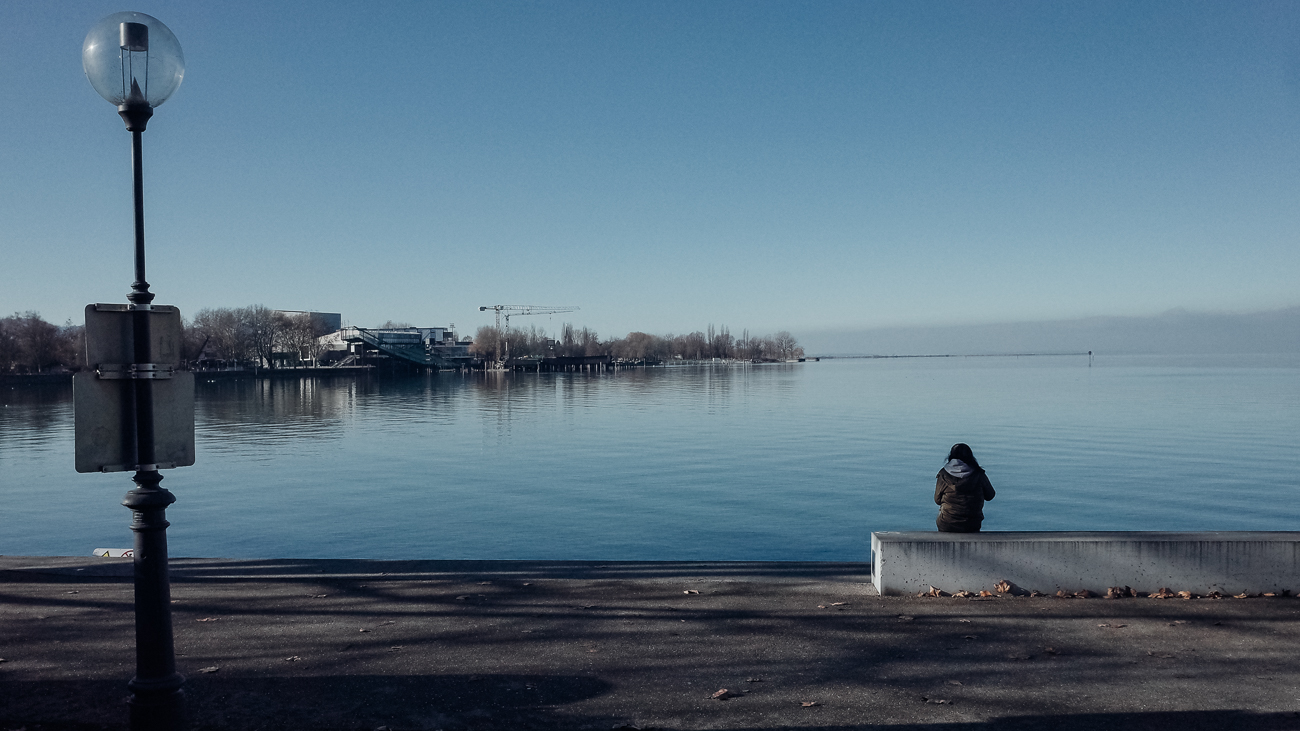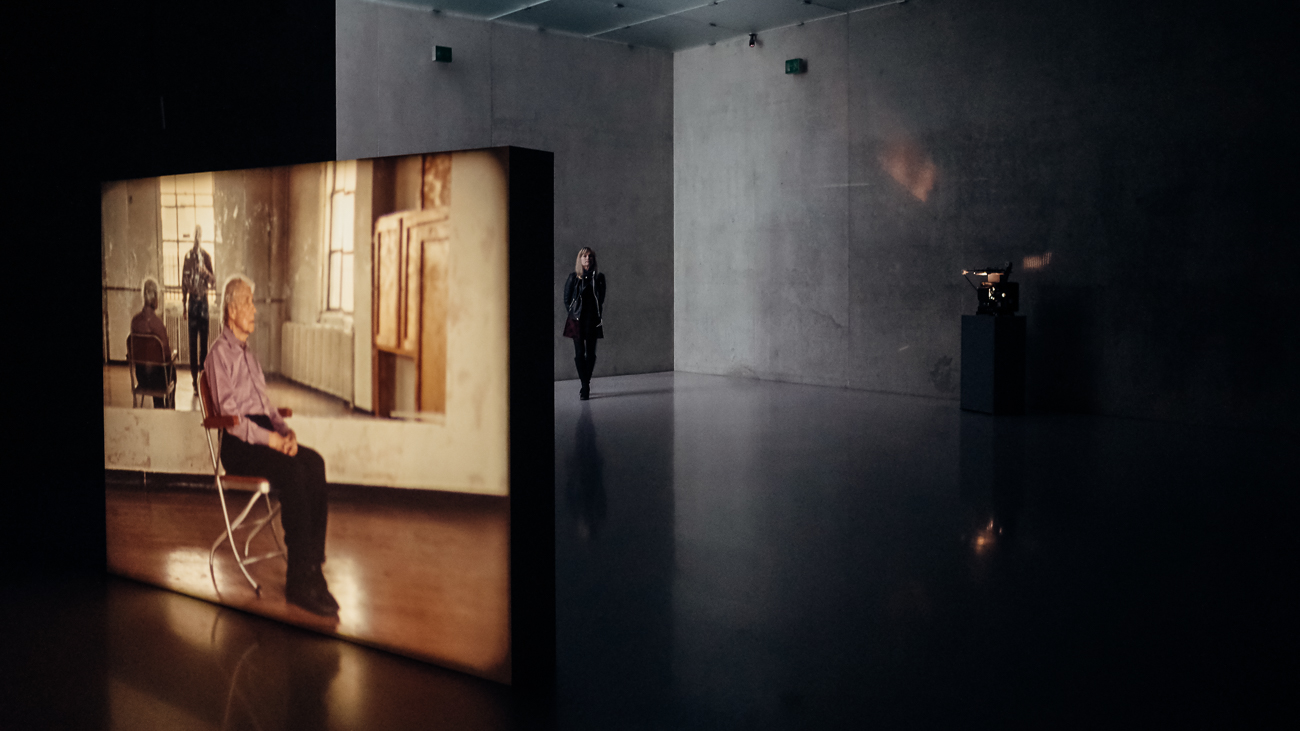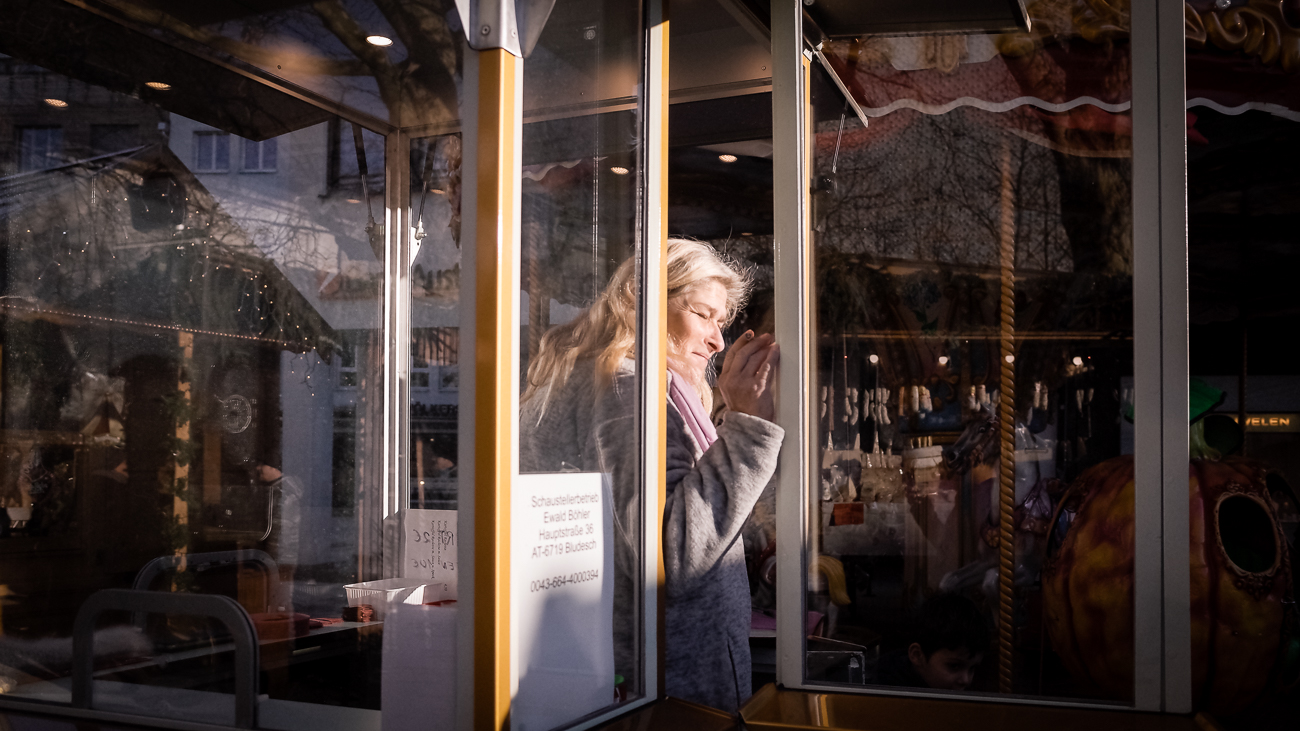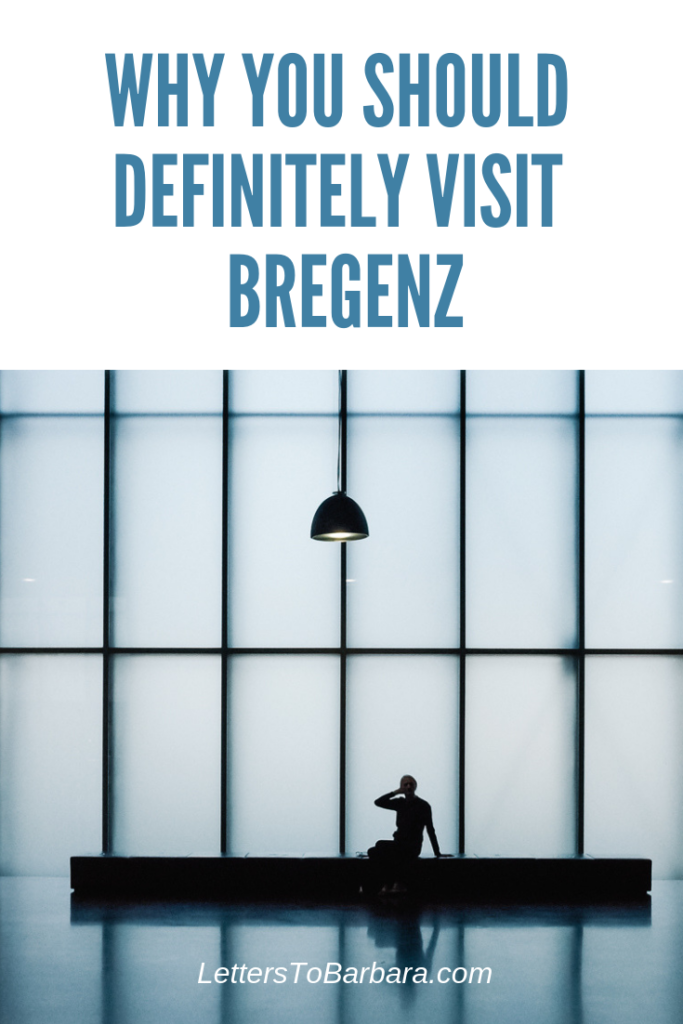Dear Barbara,
It’s my second time in Austria in less than two months. After visiting Salzburg, I’m now in Bregenz. The weather is not optimal: a thick layer of ice has covered everything. The pavements are slippery, and the night is cold. But I decided to visit Bregenz because I finally wanted to see the Bodensee, the famous Lake Constance.
Bregenz is a sleepy small city of fewer than thirty thousand inhabitants, but it still has a certain charm. It is located in the mouth of the Bodensee, and it’s often foggy. Bregenz seems to summarize Austria’s presence on the lake: the country owns only a small stripe of land here, and Bregenz is the main Austrian settlement.
I arrived rather late in Bregenz, and there’s not so much to see. I walked a bit around the city, but unfortunately, everything is closed. Finding a place to eat was challenging, but luckily the restaurant Zum Kornmesser was still open. The locals are louder than I thought they would be. The owner, a tough guy who tries to be polite at all times, has light blue eyes. I wonder if looking at the lake affects the color of the eyes here.
I will try to get some sleep, and I will set the alarm for 7 am. It will be a pity not to walk around Lake Constance. I hope that it won’t snow more overnight: right now, everything is frozen. On the balcony of my hotel room, the ashtray is full of ice. In fact, I can’t even remove it from the table: it’s stuck.
The 19th-century paradox of Bregenz

I stand in front of the lake, and I wonder what a 19th-century traveler would have thought. You see, Bodensee was some kind of a paradox: the lake was split into five different time zones. Constance was following the Karlsruhe time, Lindau adhered to Munich’s time, Friedrichshafen has decided for the time zone of the Duchy of Württemberg, Bregenz followed Prague’s time, and the Swiss part of the lake used Bern’s time! Practically, by traveling less than 50 kilometers, you could visit five time zones.
But there was serious trade in the area, and this made things insanely complicated. In 1895, the Bodensee started using a single time zone. Nowadays, there is, of course, a single time zone in the area, too. I feel that I’m all alone here. No people are strolling around, and only now and then I see the same guy walking his dog. He is a bit loud, though: I can clearly hear his voice, although he probably stands more than 200 meters away from me. It’s probably the echo of the open space.
The melting ice cube of Bregenz

Bregenz is home to a museum of great importance: the Kunsthaus Bregenz. This is a brilliant example of modern architecture, created by Peter Zumthor. It consists of glass, steel, and concrete, and when seen from the lake on a sunny day, it resembles a melting ice cube.
The day I visit the Kunsthaus, there is an exhibition by Tacita Dean. The exhibition takes place on all five floors, and I can only think of course that this is a side tribute to the time zones of Lake Constance. Mesmerized by the building’s architecture, I first take photos of the interior, and then I try to follow the work of Tacita Dean. Her work is interconnected with the medium of film, and in a short interview presented in the basement, she talks about it with passion.
Photo after photo and story after story, I spend almost two hours in the museum. When I leave the Kunsthaus Bregenz behind, the sun is shining. I walk for a while around Bodensee, and I see that melting ice cube from everywhere. I end up in a parking lot on the other side of the building, and I try to take some photos. But somehow, I can’t find the right angle.
When I finally find one, I realize that my camera is out of battery.
Screaming at the market

The Christmas market is full of people. I hear some dull Christmas music, and people drink Glühwein. To be honest, it’s not the Glühwein that comes first to my nose, but the sausages. The atmosphere is festive, but a guy is screaming. I do wonder if everybody has to scream here. He walks up and down, and he talks to himself loudly. He probably has a conversation with some inner voice, and he is one of the characters that always spice up such places. I try to listen to what he says.
He talks about conspiracies. It’s a rather passionate guy that seems perpetually lost in his thoughts. I try to communicate with him, I always like to talk with the so-called outcasts of society. I might be an outcast as well; that’s a feeling I have since I was a teenager. But unfortunately, I fail to have a proper talk with him. He keeps on screaming. For some reason, he is alarmed. I hope he doesn’t suffer.
I’m rolling my carry-on luggage, and the wheels produce some extreme noise on the stones. The guy seems irritated. He asks me for some money, but I, unfortunately, don’t have any coins. In fact, I only have one banknote, and with that, I have to survive for the next two and a half days. I tell him that I’m sorry.
The station is nearby. My train departs in less than ten minutes. I only have a couple of minutes to buy a bottle of water and a sandwich. And then, I search for the platform. All of a sudden, it’s again sunny. I close my eyes, and I let the sun wash my face. I’m actually going to one of the most expensive cities in the world. Such a pity that you aren’t here with me: I will finally visit Zurich.
Love always,
George
More about Austria: Mozart’s Salzburg

Please share, tweet, and pin if you enjoyed reading The melting ice cube of Bregenz. Your support keeps this website running and all the info up-to-date. 🙂
Last Updated on November 10, 2020 by George Pavlopoulos
